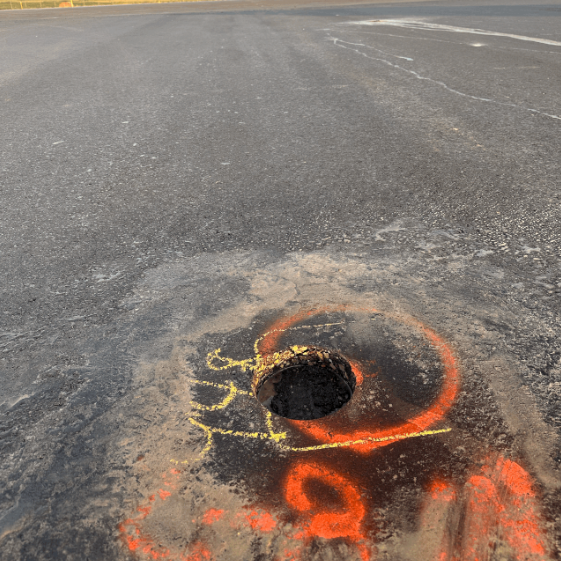Rethinking Destructive Asphalt Coring in 2025
Coring has long been the industry standard, but it tests less than 1% of the work performed.
The Love/Hate Relationship with Coring
I’ve always had a love/hate relationship with destructive asphalt coring. On one hand, it’s been the industry standard for decades. On the other, it’s hard to believe that in 2025, the best way we can still measure the quality of a newly constructed asphalt road is by drilling holes into it.
Think about that: we damage the very thing we just built in order to test if it meets performance standards. Not only that, but the data we collect from this process is shockingly small. On average, coring represents less than 1% of the total work performed on a section of road. More often, it’s closer to 0.5%.
That means contractors are judged on a fraction of a fraction of their actual work. They either have to put immense faith in their process—or hope that luck is on their side.
A Real-World Perspective
Imagine taking a 100-question test, but your teacher only grades one question at random.
If you answer it correctly, you pass the entire exam.
If you miss it, you fail—no matter how well you did on the other 99 questions.
As a student who worked hard, studied, and put in the effort, that would feel unfair. But if I hadn’t studied at all? I’d probably welcome the chance. My odds of passing would come down to luck, not actual performance.
That’s the world of destructive coring. And while it’s served a purpose in the past, we need to ask: does this system still make sense today?
Why Coring Worked (Back Then)
To be fair, destructive coring has earned its place in paving history. It pushed quality forward when no other solutions were available.
It provided one of the only data sets to measure performance and quality.
At the time, the method was simple and easy for the industry to adopt.
It gave contractors and agencies a way to hold work accountable.
It drove measurable improvements in asphalt quality.
But times have changed. Technology and data are now everywhere in construction. What was once the best option is now a limiting factor.
The Case for Change
Today, we have tools that make destructive coring feel outdated.
Modern technology (Density Gauges, RDM, IC, PMTP) allows us to capture 10%–100% of the data on a project—far more representative than 0.5%.
Mix designs, specifications, and performance requirements have all gotten tougher. If the test is harder, shouldn’t we want more data, not less, to prove our work?
Coring is inherently destructive. Every hole compromises the integrity of the pavement and requires repair. With newer methods, we can measure quality without damaging the work.
The industry has an opportunity to build trust with solutions that move us forward instead of clinging to processes that hold us back.
Destructive coring leaves visible holes in newly paved asphalt to test density and quality.
My Final Thoughts
Destructive coring served its purpose. It helped raise the bar for quality during a time when technology didn’t exist and data was scarce. But we’re not in that era anymore.
Today, technology and data are thriving on asphalt paving projects. To keep raising the standard of quality, we need to let go of what worked in the past and adopt solutions that reflect the present.
The question isn’t whether destructive coring was useful. It was. The real question is: are we willing to evolve as an industry to embrace better tools, better data, and better outcomes?
Because the roads we’re building today—and the ones we’ll drive on tomorrow—deserve it.Don’t worry about sounding professional. Sound like you. There are over 1.5 billion websites out there, but your story is what’s going to separate this one from the rest. If you read the words back and don’t hear your own voice in your head, that’s a good sign you still have more work to do.


